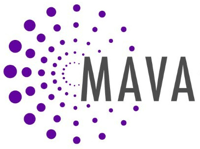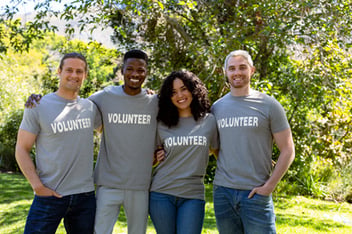This article originally appeared on www.mavanetwork.org and is featured here in partnership with the Minnesota Alliance for Volunteer Advancement.
![]()
By Holly D. Daniels
The following insightful lessons were shared by Taelyn Phillips, a dedicated Volunteer Recruitment Representative with the American Red Cross, during a recent meeting organized by the Minnesota Alliance for Volunteer Advancement (MAVA).
In her presentation, Taelyn shared a compelling story about how she leveraged feedback from current and potential volunteers to creatively enhance opportunities aimed at attracting student volunteers.
MAVA also highlighted several key steps in that innovative process, demonstrating that the path to meaningful innovation need not be as complex or daunting as we often perceive it to be.
By breaking down the steps and encouraging open dialogue, organizations can create more engaging and impactful student volunteer experiences. Let's get started.
Step 1: Listen
The American Red Cross was already interested in attracting student volunteers, and had begun the work of reimagining some of their roles. And one off-hand comment from a high school student helped serve as a catalyst.
Taelyn's co-worker was visiting a local high school last year to promote Red Cross volunteer opportunities. A student approached him and said, "I know the Red Cross—you said I couldn't give blood because I didn't weigh enough."
Apparently the student had been turned down from donating blood, and something about that experience put a bad taste in her mouth.
Instead of dismissing the student, Taelyn's co-worker listened. He even asked the student for her contact information, and if she'd be willing to share more. The American Red Cross wanted to know how their organization was perceived by young people, and here was a young person who had a negative experience and wanted to share about it. They took the chance to listen.
Step 2: Get Curious
They invited that student to share more with them about her perceptions of the Red Cross. Because she was interested in volunteering, they asked, "What does your ideal volunteer schedule look like?"
They also invited a recent college grad and former board member to share about her experience with the organization. They were interested to know: "Why did you choose the position you chose?"
"We can't just open up a new position for youth volunteers," said Taelyn. "First we need to ask them what they want and need from volunteering."
At first I asked Taelyn if she would call Step 2 Research And she said, "it's research in a sense, but it's really about putting ourselves into the shoes of those volunteers we want to attract."

Like this article?
Get more like it, plus access to exclusive reports, training, and networking events by joining MAVA's network of Volunteer Engagement Professionals.
Step 3: Tweak an Existing Role
After their conversations with volunteers and prospective volunteers from their sought-after group, they saw that student volunteers wanted roles that were "easy and interesting" with a balance of support and independence.
They took those learnings back to an existing volunteer opportunity: The youth recruiter role, which does virtual canvassing and outreach to recruit other volunteers over a large geographic area.
Pro-tip: Rather than starting from scratch, which can feel like an overwhelming prospect, how can you take what you're already doing and make some minor changes to get closer to what people are asking for? Starting over is fine and good, but making tweaks can feel more approachable!
Here are some of the tweaks that emerged:
- They developed a virtual work-along session as part of their onboarding for the role. That way, students can see what the volunteer opportunity was all about and better understand what they'd be doing. Also, If questions arise during the work-along, the supervisor is right there to answer it.
- They were able to create a role that students can do any time of day, with a set, virtual check-in meeting every other week to go over the priorities.
- To communicate, they offer various avenues: Redcross.com emails created for volunteers, a Microsoft Teams channel, and a texting service called Remind.
Step 4: Experiment and Listen Some More
After tweaking the role, Taelyn's team started small, with one new youth worker. She said, "This was still new to us and we didn't want to overwhelm ourselves!"
They've brought more people on board and had huge success with the experiment, thanks to the continuous feedback they're getting from volunteers.
"We ask them, 'if you could change something about the role, what would it be?'" Taelyn said. "They want to know their voices are heard. That's how we've kept them engaged!"
Key Takeaways: Enhancing Student Volunteer Engagement
Taelyn's approach to enhancing volunteer opportunities at the American Red Cross demonstrates the power of listening, curiosity, and adaptability.
By engaging student volunteers in meaningful dialogue, Taelyn's team was able to gather invaluable insights that informed strategic modifications to volunteer roles.
This process not only made the roles more attractive to young volunteers, but also fostered a sense of inclusion and value amongst them. Ultimately, the success of this initiative highlights the importance of continuous feedback and iterative experimentation in achieving a dynamic and responsive volunteer program.



